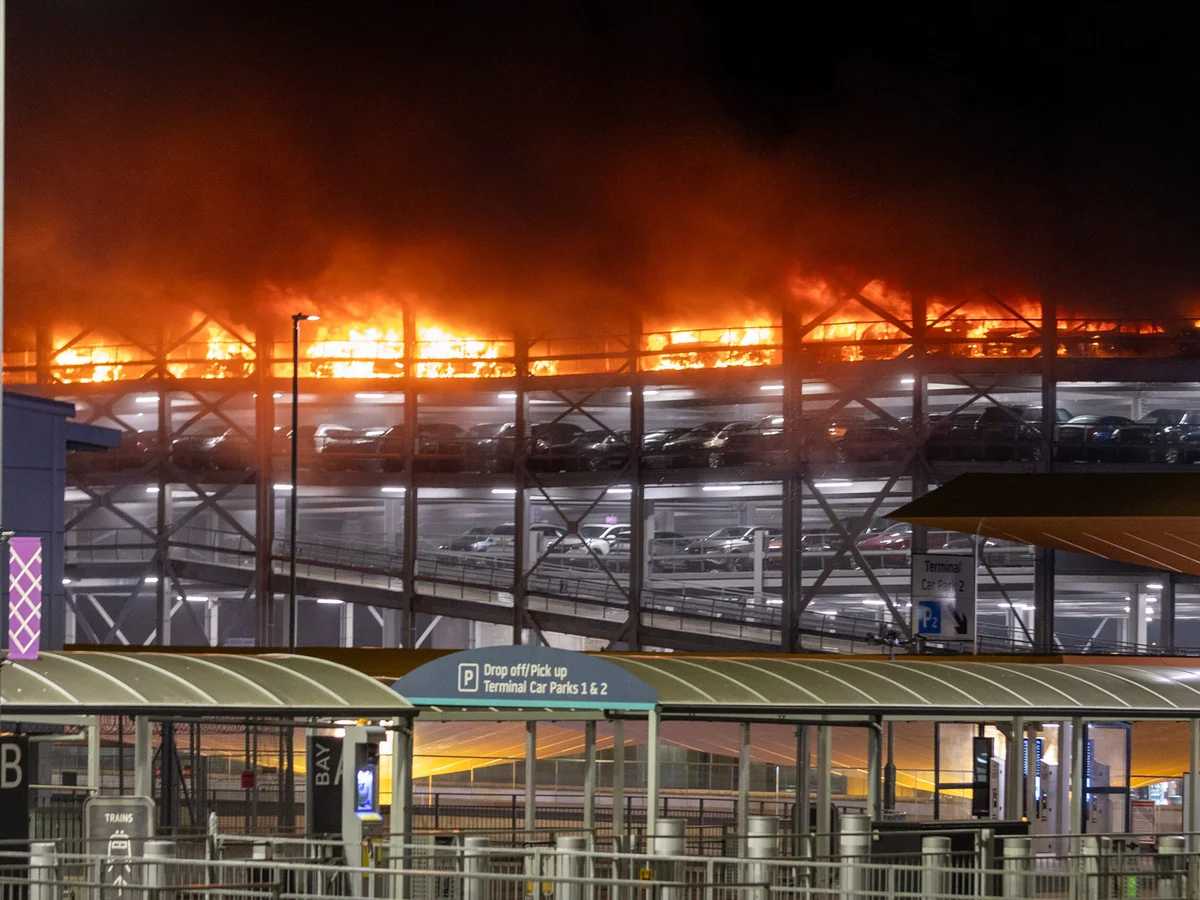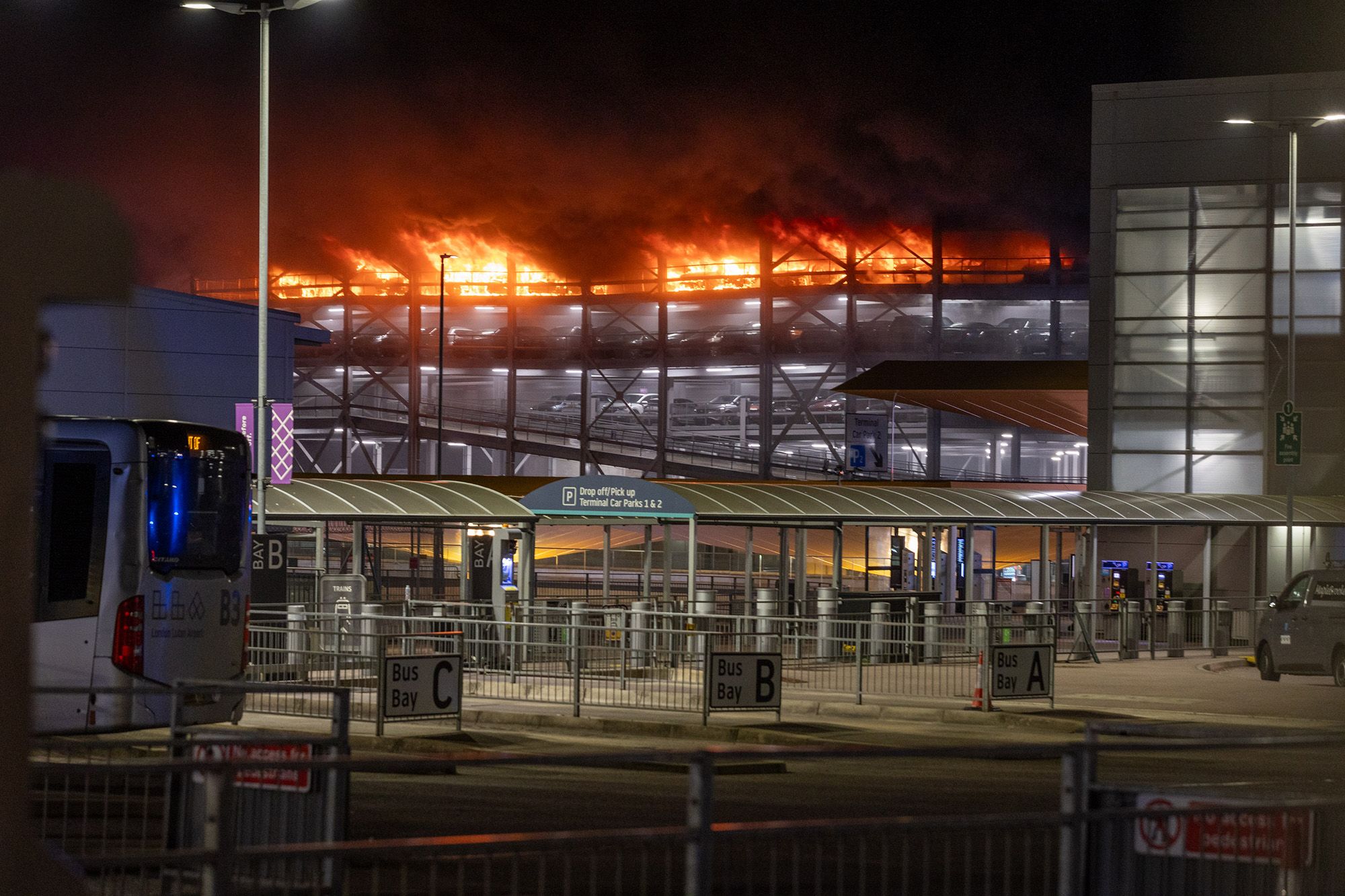
Luton airport fire, one of the busiest airports in the UK, faced a significant disruption when a fire broke out, causing widespread panic, delays, and operational challenges. This article delves into the details of the incident, examining the causes, immediate impact, and the lessons that can be learned from such a crisis.
Overview of the Incident
On the evening of [insert date], Luton airport fire was engulfed in chaos as a fire broke out in one of its terminal buildings. The fire, which started around [insert time], quickly spread, leading to the evacuation of passengers and staff. The situation escalated as thick smoke filled the terminal, and flames could be seen from a distance, creating a scene of alarm and uncertainty.
Causes of the Fire
Initial investigations into the fire suggest that it may have started in a commercial area within the terminal, possibly due to an electrical fault or a kitchen mishap. The exact cause, however, remains under investigation, with authorities examining CCTV footage, interviewing witnesses, and analyzing the fire’s origin. What is clear is that the fire spread rapidly, indicating potential lapses in fire safety protocols or structural vulnerabilities within the airport’s infrastructure.
Immediate Impact on Airport Operations
The fire had an immediate and profound impact on Luton airport fire operations. Flights were delayed or canceled as the airport was forced to shut down temporarily to ensure the safety of passengers and staff. The disruption affected thousands of travelers, with some stranded for hours, while others had to make alternative travel arrangements. The ripple effect of the fire was felt across other airports as well, as airlines scrambled to reroute flights and accommodate affected passengers.
In addition to the operational disruptions, the fire caused significant damage to the terminal building, affecting several shops, restaurants, and other facilities. The financial impact on the airport and the businesses operating within it is expected to be substantial, with losses running into millions of pounds.

Emergency Response and Evacuation
The emergency response to the fire was swift, with fire brigades from the surrounding areas arriving at the scene within minutes. Airport security and staff played a crucial role in evacuating passengers, ensuring that no one was injured during the incident. The evacuation was carried out efficiently, but the chaos and confusion that ensued highlighted some gaps in communication and coordination among the various agencies involved.
Passengers reported mixed experiences during the evacuation, with some praising the staff’s professionalism, while others criticized the lack of clear instructions and the delays in receiving information. The incident underscored the importance of having well-rehearsed emergency protocols and clear communication channels in place to manage such crises effectively.
Impact on Passengers
For the thousands of passengers caught up in the incident, the experience was a mix of frustration, anxiety, and relief. Many expressed their disappointment at the lack of timely updates and the confusion over rescheduled flights. Families with young children, elderly passengers, and those with special needs were particularly affected, as they had to wait for extended periods in uncomfortable conditions.
Social media was flooded with posts from passengers sharing their experiences, with some expressing gratitude for the swift response of emergency services, while others vented their frustrations over the handling of the situation. The incident also sparked discussions about the adequacy of compensation and support provided to affected passengers, with many calling for better policies to address such disruptions.
Long-Term Impact on Luton Airport Fire
The long-term impact of the fire on Luton airport fire is likely to be significant. The damage to the terminal building will require extensive repairs, which could take several months to complete. During this period, the airport’s capacity will be reduced, leading to further disruptions and potential financial losses.
The incident has also raised questions about the airport’s preparedness for such emergencies and the robustness of its fire safety measures. In the wake of the fire, there will likely be a thorough review of the airport’s safety protocols, with possible upgrades to its fire detection and suppression systems, as well as improvements in staff training and emergency preparedness.
Lessons Learned
The Luton airport fire fire serves as a stark reminder of the importance of rigorous fire safety standards and emergency preparedness in large public facilities. Airports, by their very nature, are complex environments with a high density of people, making them particularly vulnerable to the risks of fire and other emergencies.
One of the key lessons from this incident is the need for regular fire safety audits and the maintenance of fire prevention systems. Ensuring that all electrical systems, kitchens, and other potential fire hazards are regularly inspected and maintained can significantly reduce the risk of such incidents.
Another critical takeaway is the importance of clear communication and coordination during emergencies. The chaos and confusion reported by passengers highlight the need for well-rehearsed evacuation procedures and the availability of clear, real-time information to those affected. Airports must invest in robust communication systems that can keep passengers informed and provide guidance during emergencies.
Finally, the incident underscores the need for comprehensive contingency plans to manage the aftermath of such events. This includes not only the immediate response and evacuation but also the provision of support and compensation to affected passengers, as well as the recovery and restoration of operations.
Moving Forward
As Luton airport fire begins the process of recovery, there will be a period of reflection and reassessment. The airport will need to work closely with regulatory authorities, fire safety experts, and other stakeholders to ensure that the lessons learned from this incident are implemented effectively. This may include upgrades to the airport’s infrastructure, enhanced training for staff, and improved emergency response protocols.
For passengers, the incident serves as a reminder of the importance of safety and the need to remain vigilant in such environments. While the fire was an unfortunate event, the fact that no lives were lost is a testament to the effectiveness of the evacuation and emergency response efforts.
In conclusion, the Luton airport fire fire was a significant incident that caused widespread disruption and highlighted several areas for improvement in fire safety and emergency preparedness. By learning from this experience and implementing the necessary changes, Luton airport fire can enhance its resilience and ensure the safety of its passengers and staff in the future.








